
You don’t have time to make mistakes when it comes to termite inspection and treatment. The speed and ferocity of a termite infestation is something that has to be seen to be believed! Only an expert can perform the kind of inspection and treatment that will protect your home or business.
At Exopest we are the termite control experts – we use a technological approach to dealing with termite infestations and treatments. We have been studying termites for decades including their breeding patterns, propensity for infestation, and more. We are confident that we are the best. Our track record speaks for itself – read our reviews here.
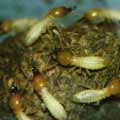
Termite Soldiers
Termites, often known as white ants, are wood eating insects. Termites are variable in size, colour, and shape. Termites are highly modified cockroaches and although they are often referred to as ‘white ants’, they are not related to the ant family at all.
Termites are social insects and live in colonies. Some termites live in mounds above ground (e.g. magnetic termites), some live in nests up telephone poles (e.g., the Nasutitermes species), some in the base of trees and stumps (e.g., Coptotermes species), and some even live in the timber walls of the home. Call us to find out more on 1800 686 299.
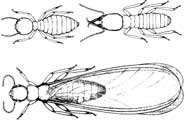 Termites live in groups or colonies up to several million in number. In any colony there are various different forms called castes. Worker castes are for food supply and tunneling. Soldier castes defend the colony against intruders and reproductive castes are for future generations and colony survival. Reproductive termites are often referred to as alates. The worker and soldier castes are sterile. All termites consume cellulose (found in timber, paper, cardboard, grass etc.) as their food source.
Termites live in groups or colonies up to several million in number. In any colony there are various different forms called castes. Worker castes are for food supply and tunneling. Soldier castes defend the colony against intruders and reproductive castes are for future generations and colony survival. Reproductive termites are often referred to as alates. The worker and soldier castes are sterile. All termites consume cellulose (found in timber, paper, cardboard, grass etc.) as their food source.
Give us a call 1800 686 299 to book your termite inspection.
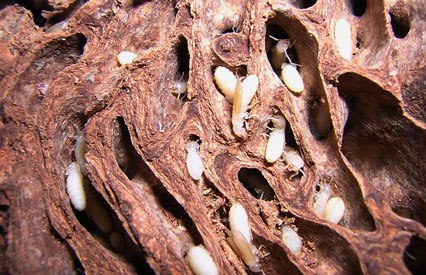
In Melbourne termites nest in many interesting, unusual places such as soil fill, old building materials under premises, cavity walls and hidden voids under buildings. We have found them nesting in timber false floors between concrete floors in commercial high-rise buildings. You can find them under concrete slabs in patios, verandas, and paths around your premises. They also nest in eucalyptus, peppercorns, and imported oak, elms etc.
Termites can nest in the trunk of a tree just above soil level or sometimes higher up in the fork of a branch where moisture has entered the tree causing decay. Termites can tunnel 50-80 m from their nest to a feed site, for example from a tree three house blocks away to a piece of skirting in a building. The worker termites, which have chewing mouth parts, are responsible for timber damage and form over 80 per cent of the individuals in a colony.
Coptotermes termite workers are 5-8 mm long with the soldiers slightly larger having a darker head and pincers or biting jaws called mandibles on their head. These mandibles are used for protection of the termite colony.
Often the termite flight occurs when the occupants of the house are out. On their return, they find a house full of winged insects and have no idea where they came from or what they are. Most alates are found around the edge of carpets, trying to escape towards the light. They are naturally attracted to light, however, they do not live for long inside the building and quickly die. Always keep a few termite alates samples as your Exopest technician will be able to identify the exact species. Correct identification of the species is very important in making the right treatment recommendations.
Termite alates are sexually mature males and females whereas the other termite castes are sterile. There is normally one queen termite per nest and she can measure up to 4 cm in length and live up to 40 years. The queen is very productive in her lifetime and can produce as many as 40,000 eggs per day. The king and queen are entombed in the egg-laying chamber in the centre of the colony and coordinate the daily activities of the worker and soldier termites.
Termite colonies only fly when the colony is mature, anything up to 5 years after the original nuptial flight.
The Exopest philosophy is to help and advise people how to protect their property from termite infestation and timber damage. Our commitment led us to devise termEsafe, our own Termite Management Program. The program consists of the following:
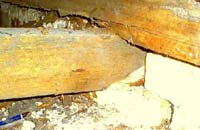 Inspect and report on termite-damaged timber and live termites in and around the building. Termite detection equipment using Termatrac T3i, Tramex moisture meter and tap sounding techniques.
Inspect and report on termite-damaged timber and live termites in and around the building. Termite detection equipment using Termatrac T3i, Tramex moisture meter and tap sounding techniques.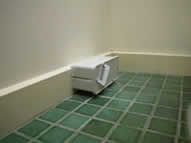
Termite Feed Station
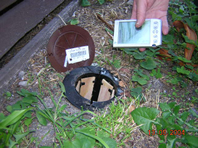
In-ground Station
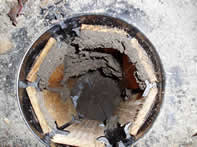
Termite Presence

Termite Pathways
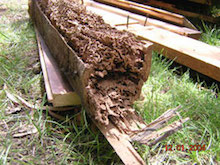
Floor Bearer Damage
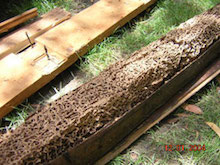
Floor Bearer Damage
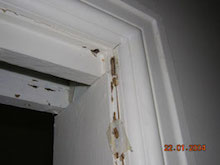
Termite Flight Cuts
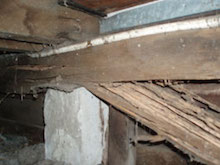
Collapsed Bearer
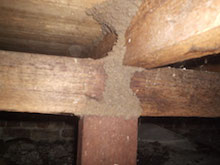
Termite Mud Pack
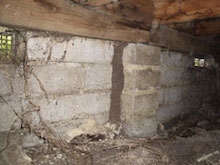
Termite Mud Tunnel
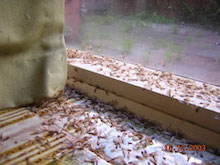
Winged Termites
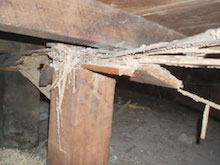
Heavy Termite Damage